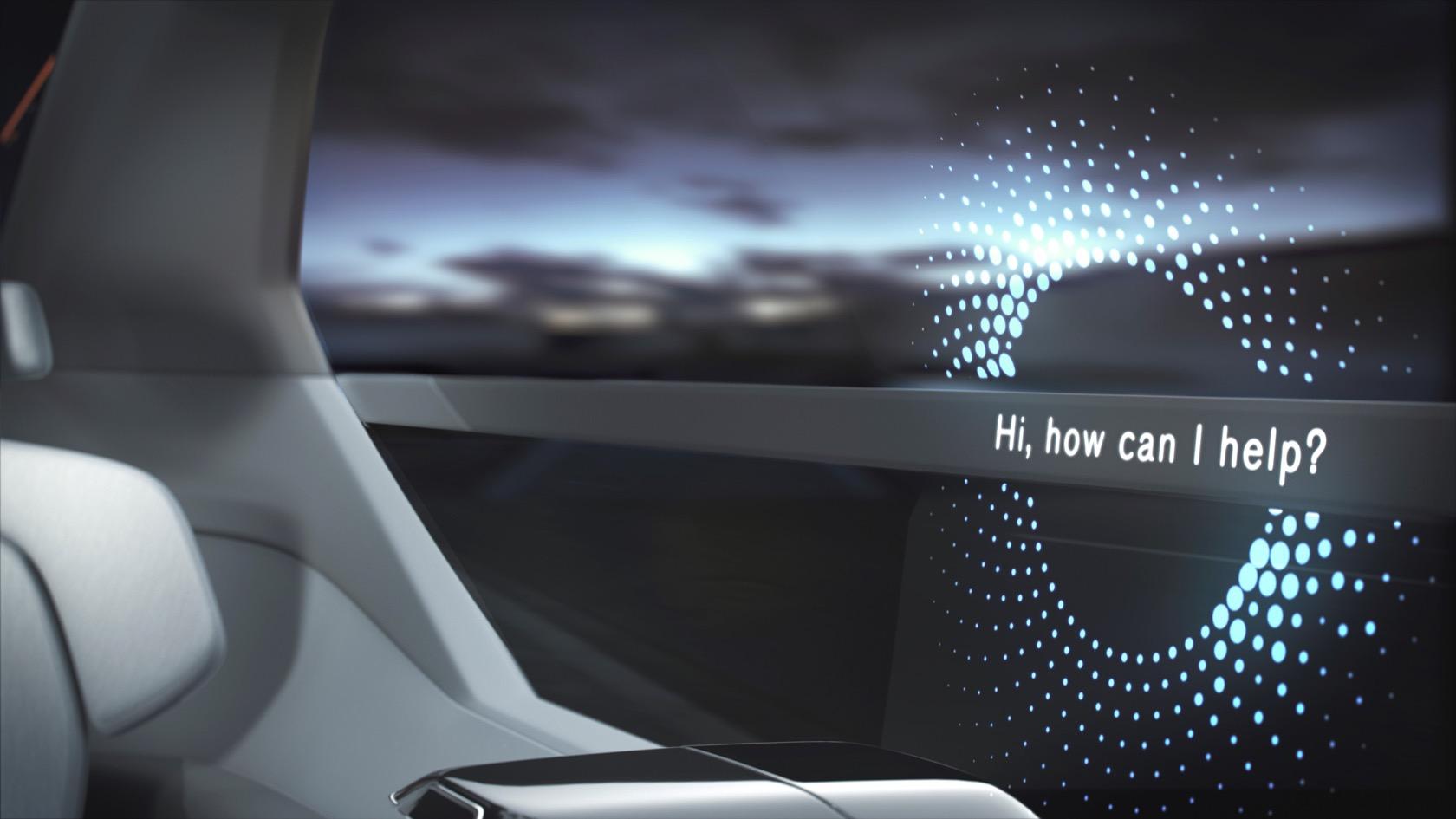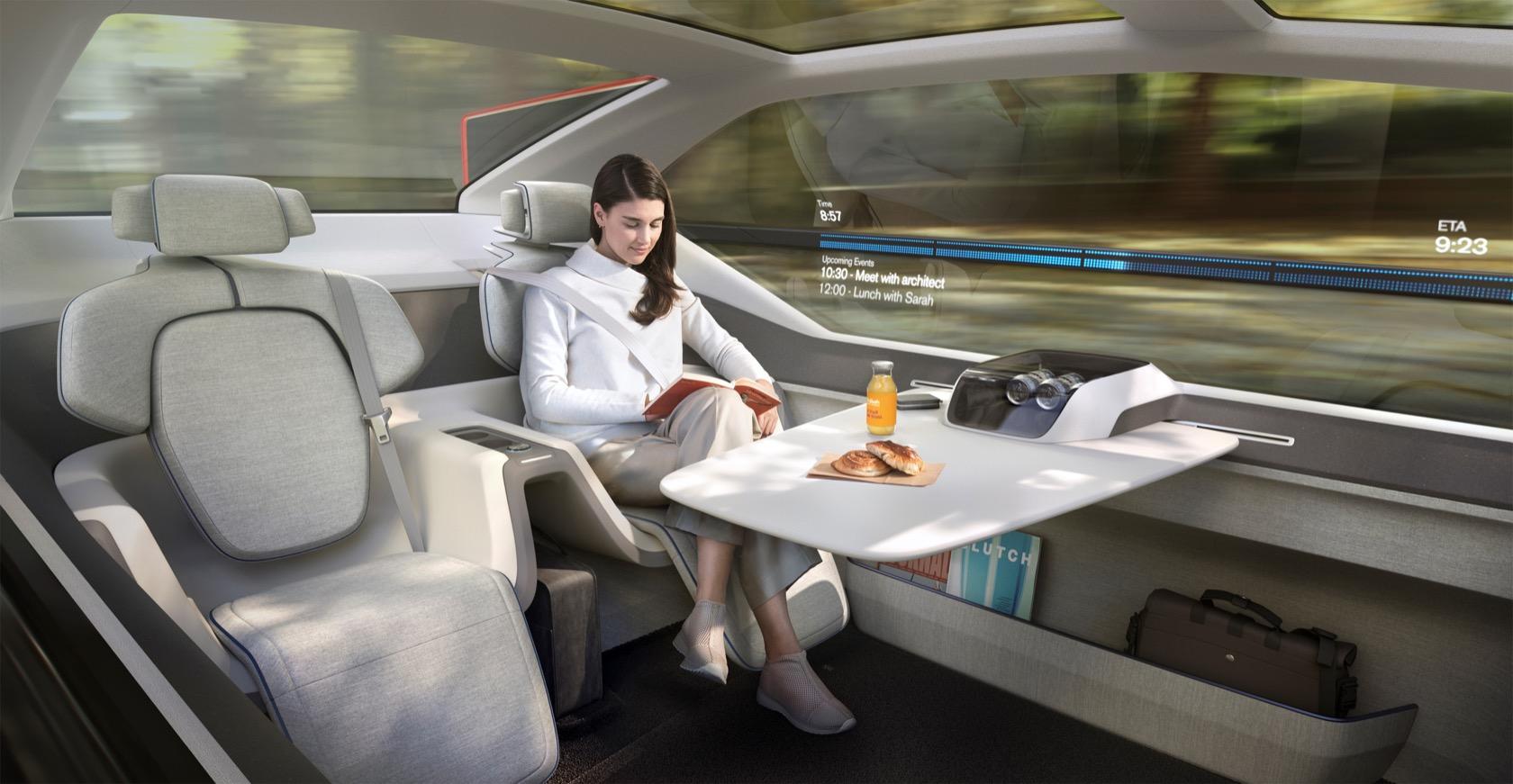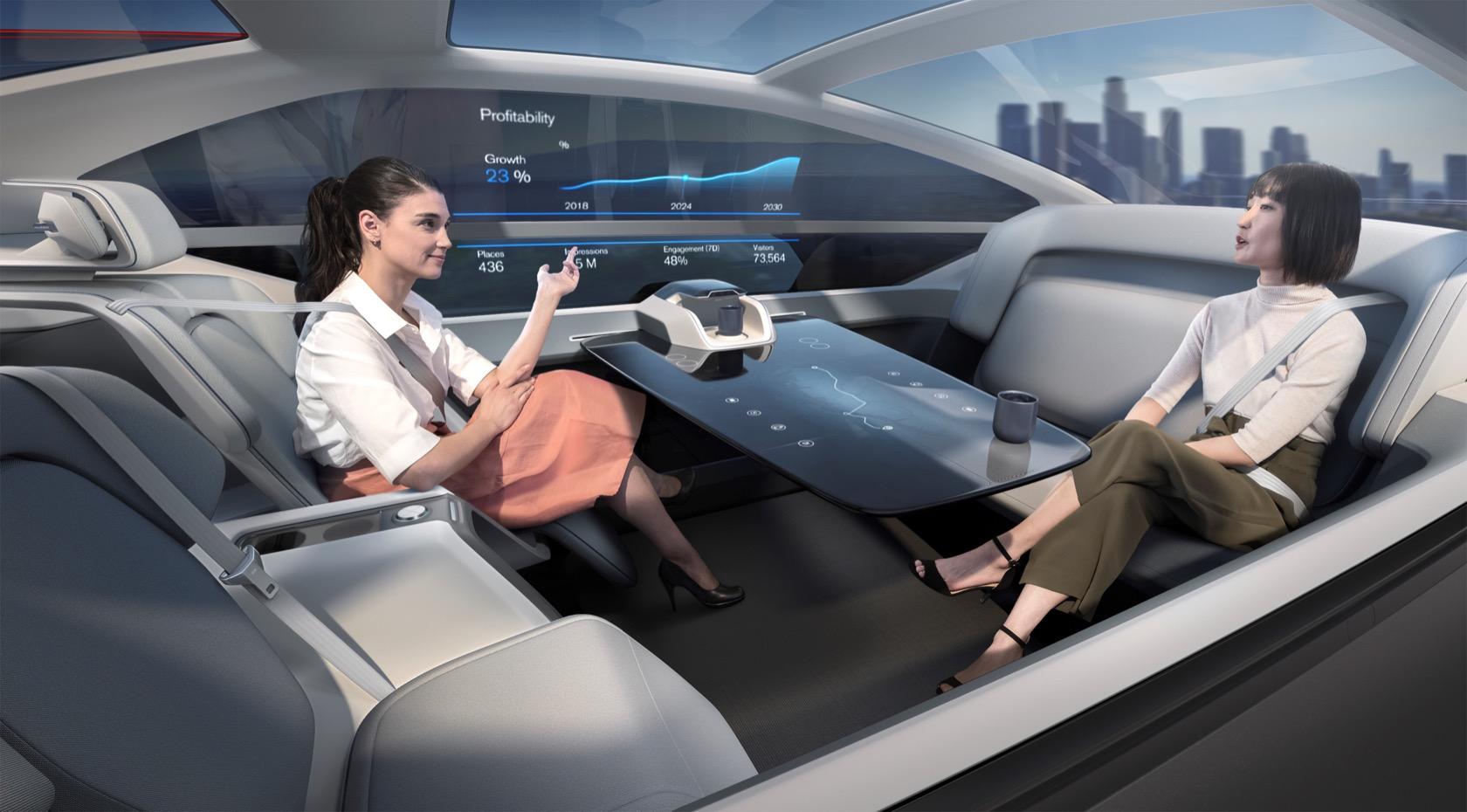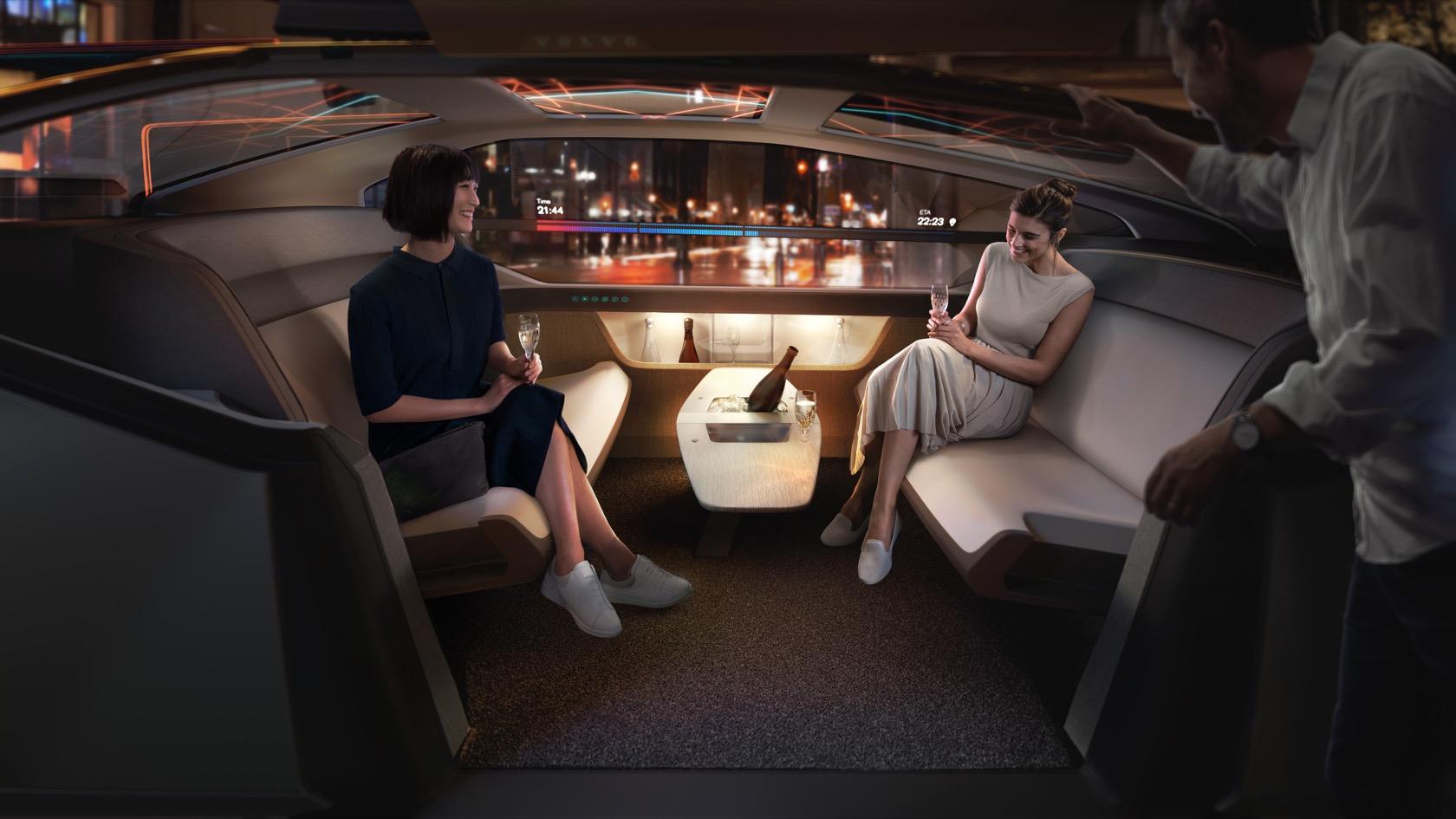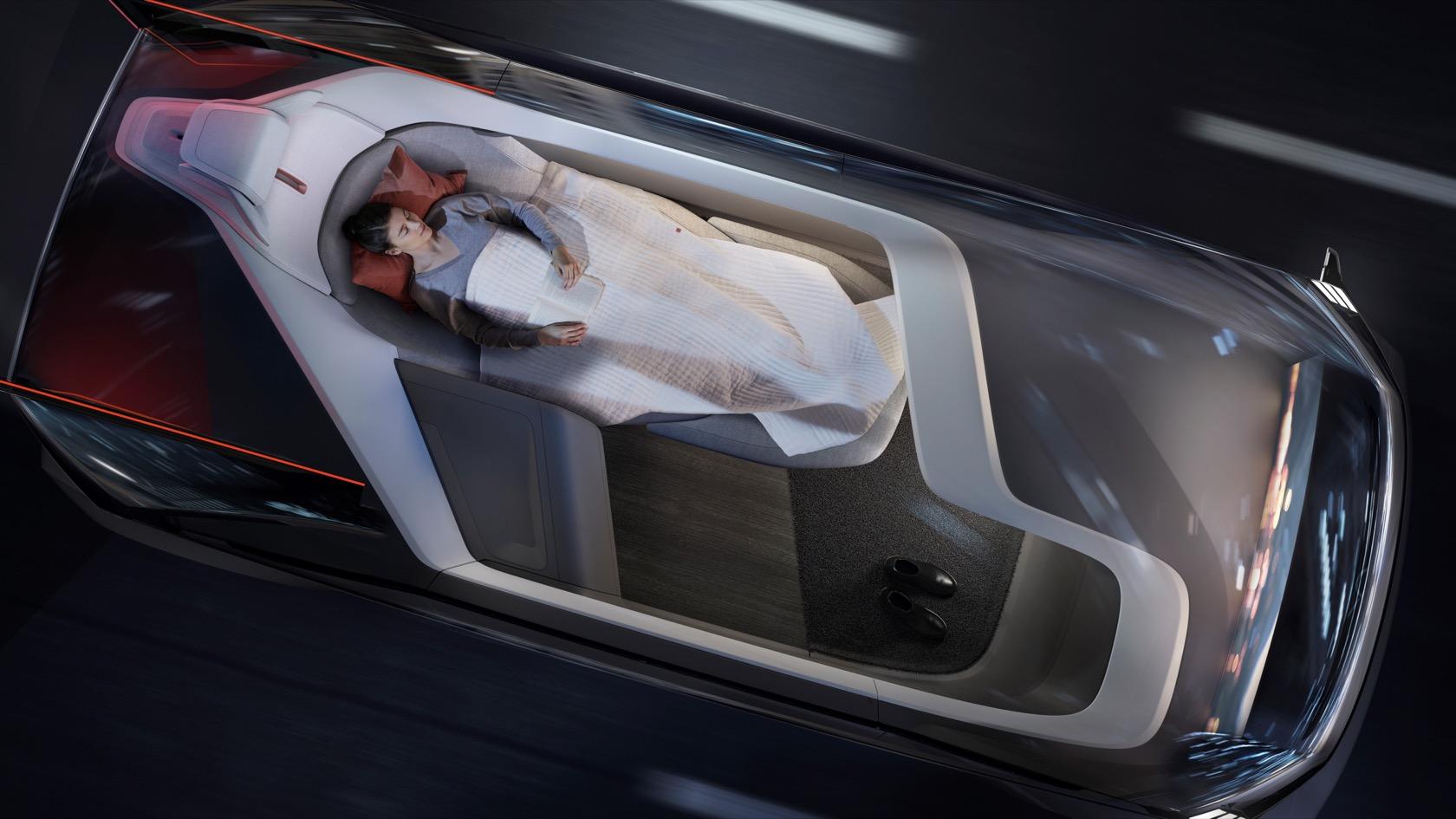Volvo 360c Concept Gives Autonomous Cars A Purpose And A Voice
Volvo has revealed its new driverless concept car, but the Volvo 360c is more about how autonomy could change your day-to-day life than the usual auto industry obsessions of speed and horsepower. The striking prototype is more about the interior and what you'll do in it, in fact, whether that be sleeping, entertaining, or working. With that, Volvo argues, could come reduced congestion in cities, less of a pressure to live in dense urban environments, and even potentially lucrative alternatives to air travel and more.
The 360c is, as you'd expect, fully autonomous and fully electric. It's designed to explore one of the most significant disruptive elements that driverless vehicles will possess: that journey time previously occupied by actively controlling a vehicle will suddenly be unlocked for other purposes. What those purposes might be, and how technology will enable them to be delivered safely and most efficiently, is at the core.
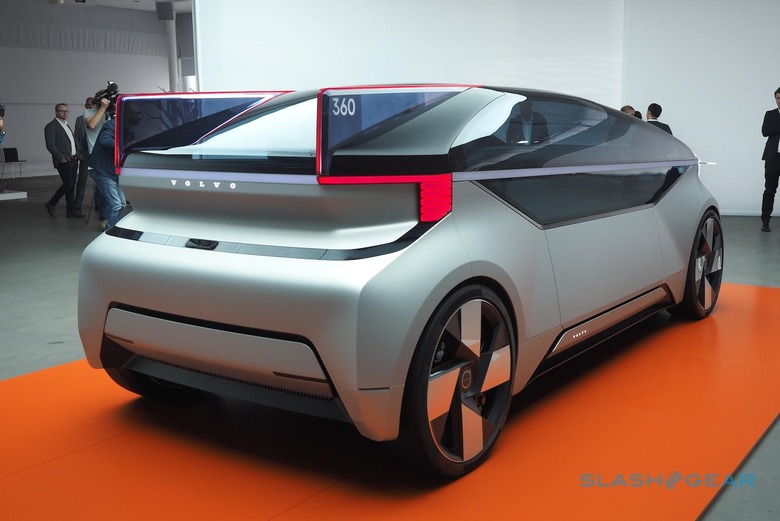
From the outside, it's clear this is no ordinary Volvo. The design is intended to maximize the interior space, like a shuttle craft, though it has roughly the same dimensions as an existing XC90 SUV. Plenty of glass and LED elements give it a suitably space-age feel.
It's not Volvo's first play at autonomy, mind. The company already has self-driving cars on the road, both undergoing its own trials and providing vehicles for third-party projects, like Uber. They're modified XC90 SUVs, outfitted with extra sensors and onboard processing power.
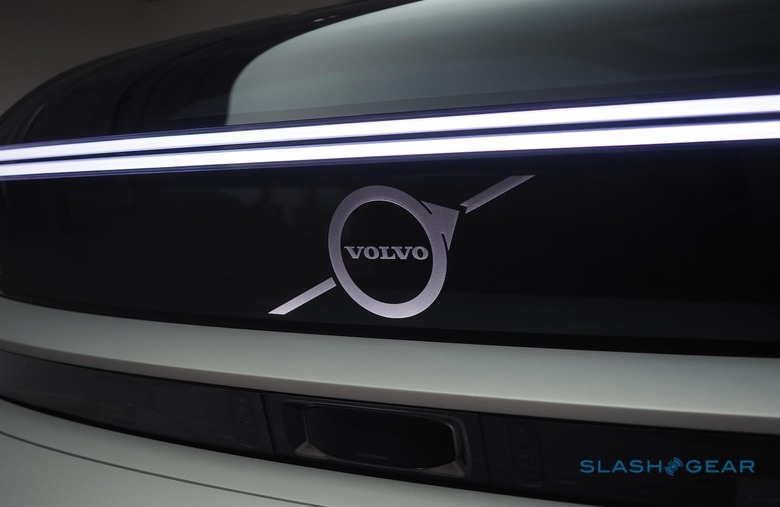
In late 2015, meanwhile, the company revealed its first autonomous concept car – or the interior of one, at least. Dubbed Volvo Concept 26, it raised the question of how people might interact with a driverless vehicle, particularly one which could operate in both manual and automatic modes. Concept 26 addressed that with a sizable touchscreen display that could rotate into place from the dashboard, a retractable wheel, and a new version of the automaker's seat.
What distinguished Concept 26 from some of the other autonomous projects we've seen in recent years was how practical it was. Rather than offer designers a blank sheet of paper, Volvo instead started with the requirement that the cabin must fit into its existing vehicles. Indeed, it was that focus on feasibility that made Concept 26 such a success: this was not some pie-in-the-sky flight of fancy, but something you could envisage interacting with day to day.
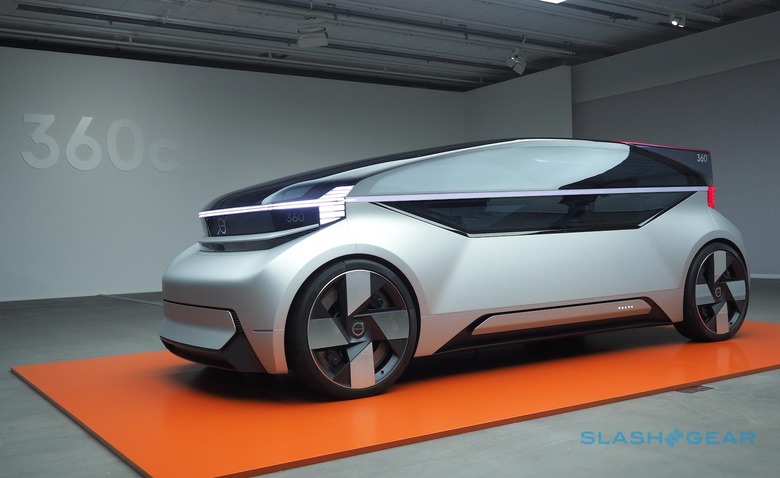
In the same way, Volvo 360c puts practical concerns around driverless vehicles to the forefront. Yes, it's visually distinctive from the production cars in Volvo's line-up; no, it doesn't have a steering wheel, or the other traditional controls you'd expect to find in a current vehicle. However it raises straightforward questions about how autonomy will affect tomorrow's cities, how it will require changes in safety technology, and – more specifically – how Volvo's role as an automaker is likely to evolve.
"The 360c explores what becomes possible when we remove the human driver, using new freedoms in design and recapturing time," Mårten Levenstam, senior vice president of corporate strategy at Volvo Cars, suggests, "it's a glimpse at how autonomous drive technology will change the world as we know it. The possibilities are mind-boggling."
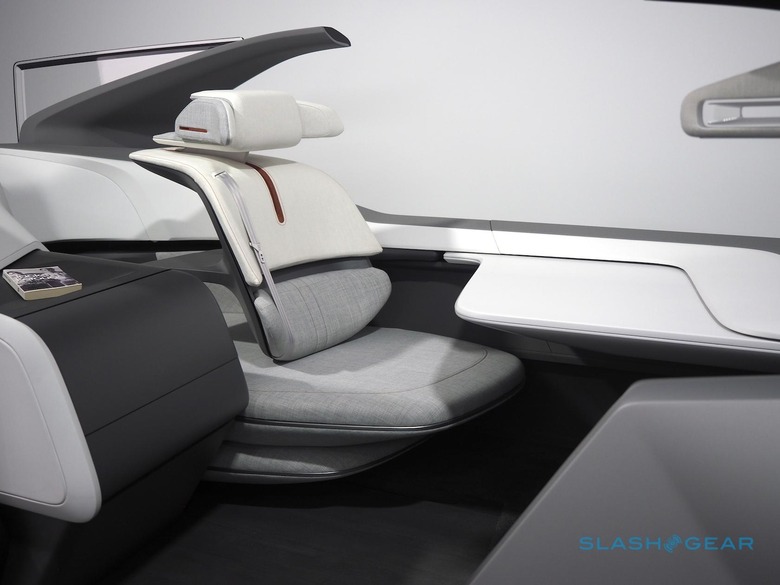
Four potential uses are explored: a sleeping environment, a mobile office, a living room, and an entertainment space. Each has a customized cabin layout, reflecting how the architecture of a vehicle's interior could be different if the traditional requirements of controls, road, visibility, and other factors no longer apply.
It's also, Volvo believes, a chance to expand into new businesses. One particular area of interest is how a vehicle like the 360c could compete with short-haul air travel, particularly on shorter, sub-200 mile routes. For such trips – including New York to Washington DC, and Los Angeles to San Diego – the relatively short flight is surrounded by a time-sink of traveling to and from the airport, navigating security, and then waiting at the gate.
Better, Volvo argues, would be allowing an autonomous car to play chauffeur. With the sleeping cabin, for example, you could be picked up at home, sleep through the journey, and arrive in the morning at your destination. "It could enable us to compete with the world's leading aircraft makers," Levenstam suggests.
On the practical side, meanwhile, with 360c Volvo is arguing for the need for new safety standards for autonomous cars. With any driverless vehicle inevitably sharing the road with human-piloted vehicles, purely electronic car-to-car communication won't be enough. "It will no longer be possible to make eye contact with and learn about another driver's intentions," the automaker points out, "a central element of today's everyday traffic interaction."
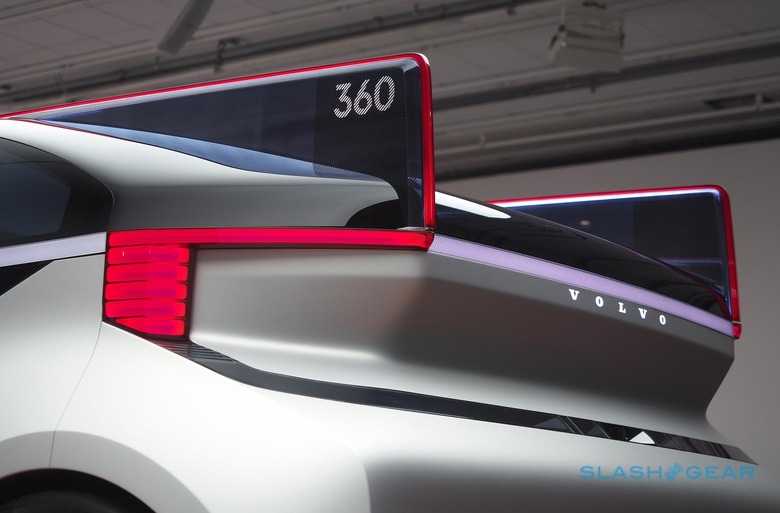
The result is the 360c's safety communication technology, a combination of sounds, colors, visuals, and movements, that can be combined so that those outside of the vehicle will better understand what the computerized car plans to do next. Targeted ultrasonics could be used to catch the attention of just the people inadvertently walking right in front of the 360c. Importantly, Volvo envisages such a system should be automaker-agnostic if it's to be successful. "We strongly believe this communication method should be a universal standard," Malin Ekholm, Vice President at the Volvo Cars Safety Center, says, "so all road users can communicate easily with any autonomous car, regardless of which maker built it."
Similarly, inside the vehicle there's an acknowledgment that current safety technology may need an upgrade to reflect how driverless vehicles are used. Most notably, Volvo has designed a new safety blanket. That implements a special restraining system, similar to how a three-point safety belt operates, but that can be used even if people are lying down and sleeping.
As for when we could expect to see vehicles like 360c on the road, Volvo is upfront about the fact that it envisages the concept as a conversation starter, not a production car. Ideas like a single, industry-wide method of visual communication between human and AI drivers, for example, will require other automakers to buy into Volvo's vision and agree to collaborate on a standard.
That goal may be just as ambitious as the technology to power driverless vehicles is. As we've seen with attempts to settle upon a single standard for car-to-car communication, for dynamic high-definition maps that more accurately reflect not only the true reality of the roadway but its evolving nature, and even the definitions and expectations of autonomous levels themselves, there are far more projects than there are agreements. Regulators have been cautious to weigh in on anything but the very basics, leaving a free-for-all in the industry when it comes to ideas and platforms.
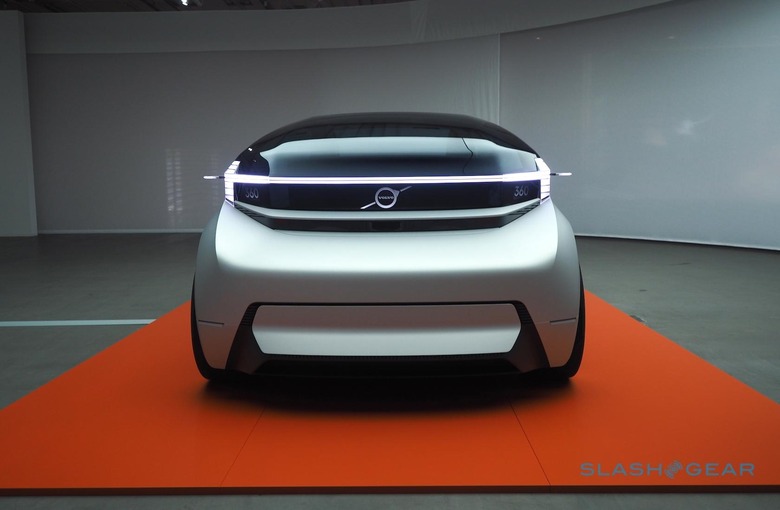
One thing is abundantly clear, though. If driverless vehicles are to coexist with human drivers in any sort of scale on the roads as they are currently, the questions raised by concepts like Volvo 360c will need to be addressed. At the same time, if autonomous driving is to be more than just a technological pet-project for a privileged few, how it could reshape modern cities and lifestyles must also be explored. Volvo may not have all the answers itself, but it's about time someone was at least asking the questions.

